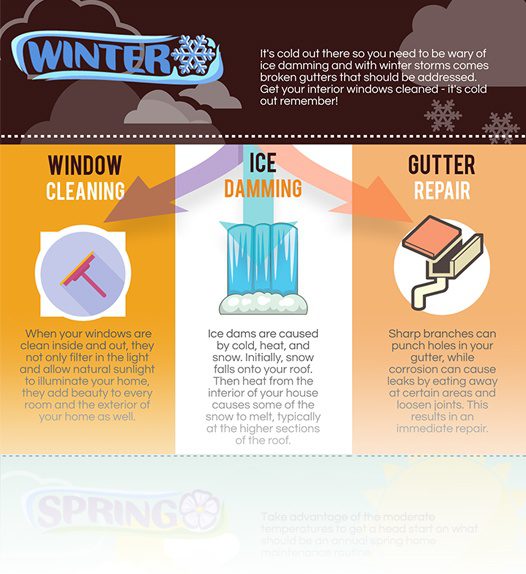The Most Efficient Pressure Washing Practices For Every Surface Group
The Most Efficient Pressure Washing Practices For Every Surface Group
Blog Article
Produced By-Stone Markussen
When it involves pressure cleaning, the strategy you pick can make all the difference in attaining a tidy, streak-free surface. You might find that difficult surfaces, like concrete, need a different technique than softer products, such as wood or plastic. It's important to adjust your techniques to the surface area kind to stop damage while making the most of cleansing effectiveness. So, what are the most effective methods for each surface, and how can you ensure you're utilizing the right settings and tools for the task? Allow's discover what you require to understand to get the best results.
Hard Surface areas
When it concerns press cleaning hard surface areas, prep work is key. Prior to you even think about taking out the pressure washer, make the effort to get rid of the area of any type of particles, furniture, or barriers. You do not want anything getting in your method or possibly harmful your tools.
Next, check the surface for any kind of fractures or damage; this will certainly assist you determine the best approach and pressure settings.
Once you have actually prepared the area, it's important to select the appropriate nozzle. For hard surface areas like concrete or brick, a slim nozzle (15 or 25 degrees) works best to give a concentrated stream of water that can effectively get rid of crud and stains. Constantly begin at a distance and progressively relocate closer to avoid any type of surface area damages.
As you begin washing, maintain the stick moving to stop streaks and over-saturation. It's likewise helpful to function from the top down, permitting dust and debris to remove normally.
Ultimately, remember to rinse the surface completely after cleaning up to remove any remaining detergent. With these strategies, you'll achieve a tidy and refreshed look on all your hard surfaces.
Soft Surfaces
Pressure washing soft surface areas needs a gentler technique to secure them from damages. Whether https://hotelcleaningservices43210.blogscribble.com/32602897/the-benefits-of-making-use-of-window-cleansing-services-for-commercial-facilities cleansing your deck, patio furnishings, or exterior siding, using way too much stress can result in damages, scratches, or perhaps irreparable damage.
Start by picking denver commercial window cleaning -pressure nozzle, preferably a 25-degree or bigger spray pattern, to distribute the water much more carefully.
Prior to you start, it's crucial to pre-treat any stains with an appropriate cleansing option. This step permits the cleaner to permeate the dust and crud, making it easier to wash away without rubbing too hard.
Always apply the remedy from the bottom up to protect against spotting.
When you begin stress cleaning, keep a range of at the very least 12 to 18 inches from the surface area. Move your wand in a sweeping motion, keeping it parallel to the surface to stay clear of concentrated pressure on one area.
Wash the area extensively after cleaning up to remove any kind of residual cleanser.
Lastly, examine the surface area for any kind of missed spots and repeat the process if required. By https://www.express.co.uk/life-style/property/1557405/carpet-rug-smell-musty-evg to these actions, you can effectively clean soft surfaces while maintaining their stability and look.
Specialized Surfaces
Cleaning up soft surfaces needs care, yet specialized surface areas demand a lot more focus to information. When you take on these surface areas, like delicate wood, discolored concrete, or specific sorts of exterior siding, utilizing the right stress cleaning strategies is important to avoid damage.
First, evaluate the product. For https://university-cleaners-compa22109.win-blog.com/12941297/seasonal-pressure-laundering-timing-and-reason-for-cleaning-your-outside-surfaces , dealt with wood can typically hold up against modest stress, but softer timbers like cedar might require a lower setting. Constantly begin with the most affordable stress and gradually raise if needed.
For stained concrete, utilize a follower spray nozzle and maintain a regular distance to prevent etching the surface.
When taking care of surface areas like plastic siding or repainted surfaces, a wide spray pattern helps distribute the pressure uniformly, protecting the finish.
It's also important to make use of cleaning agents particularly developed for specialized surface areas. They can enhance cleaning without jeopardizing the material.
Wash thoroughly after washing to remove any residue, as it can lead to staining or wear and tear over time.
Final thought
In conclusion, mastering pressure washing techniques for different surface areas can make all the difference in your cleansing results. For tough surfaces, stay with narrow nozzles and a top-to-bottom technique, while soft surface areas need a gentler touch with bigger nozzles. Do not forget to pre-treat spots and wash completely to stay clear of residue. By adjusting your methods to every material, you'll not just attain a cleaner surface but likewise protect the honesty of your surface areas. Pleased cleaning!
